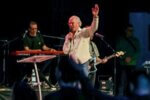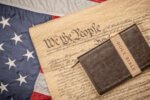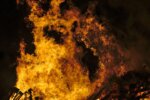When the Pentecostal movement began, americans were concerned about corporate greed, fuel prices, an earthquake that destroyed a major u.s. city and a tidal wave that killed 2,500 in florida.
When January 1, 1906, dawned across the city of New York, only one year had passed since The New York Times had occupied its newly completed “uptown centre” where Broadway and 42nd Street meet.
A report in the paper’s New Year’s Day edition stated: “When the [Times] structure was projected with considerable more space than was needed for the newspaper, many doubters made themselves heard. ‘Who’ll take the offices?’ [said] real estate men, whose views ordinarily command attention.”
The reporter noted further, in what we recognize now as understated terms, that the Times’ presence at Broadway and 42nd was not surprising, since the junction was “destined to assume business importance.” The entire world knows the area today as Times Square.
Even though the pulse of America’s capitalism and industry could be clearly felt in power centers such as New York, the nation’s blood still pumped from its 19th century rural heart. Roughly 48 million Americans lived in rural areas compared with about 36.1 million in urban areas.
America’s population in 1906 was also less than a third the number it is today. It was 85.4 million, according to Census Bureau figures published at mid-year, and split almost evenly between the genders: 43.8 million males, 41.6 million females.
Of males 14 and older, 32.5 percent were single, 60.4 percent were married, and .5 percent were divorced. Of females in the same age bracket, 24.5 percent were single, 60.1 percent were married and .6 percent were divorced. About 35 million Americans attended church and belonged to the country’s 186 denominations.
American life was rooted in much the same soil it is today. Americans were interested in the cost of living, health, sports, leisure and fashion. They were in search of a better way of life, despite the turbulence they felt when their country was rocked by corporate scandal and natural disasters.
National unemployment was 1.7 percent. A postage stamp cost 2 cents. When you bought groceries in 1906, assuming you didn’t grow or raise them yourself, you could expect butter and eggs to cost more than pork. Butter ran 30 cents a pound; bacon 20 cents a pound. If you were nimble and had 28 cents, you could skip home with a pound of fresh eggs—in case you wanted to fry some with the butcher-cut pork chops you’d just bought for 15 cents a pound.
Of the staples, milk was the best deal: A quart—delivered to your door—cost 7 cents. A large package of Quaker Puffed Rice to complement your milk ran 9 cents. You could sweeten your cereal with a spoonful of sugar from a 5-pound sack that cost 29 cents, or wash it down with coffee, an import item that ranged from 16 cents to 40 cents a pound, depending on tariffs.
For 18 cents or less, you could tote home a hefty 3-pound can of baked beans, red tomatoes, cling peaches, California apricots or clam chowder. For another 15 cents you could get 5 pounds of flour. This you would need since bread, unless bought in bakeries, wasn’t sold in loaves. You made your own.
One unusual health-care item was a cigarette by Espic that promised to “promptly cure asthma.” Another was a cough medicine by Bayer that touted the product’s active ingredient with the slogan: “Heroin: The sedative for coughs.”
Telephone communication was spreading in New York City. A newspaper headline on January 2 stated: “Telephone Habit Grows.” The story reported that 35,000 new telephones had been contracted in 1905 in Manhattan and the Bronx, the largest number ever recorded for the two boroughs, and contracts in the other three boroughs had also increased.
There was no entertainment “industry” in 1906, but Americans still had their favorite pastimes. Professional baseball, as well as football, could be enjoyed by those who lived in the few large cities that could afford a professional team. Meanwhile, leisure-style sports filled in the gaps: horse racing, tennis, golf or yachting.
Auto racing had caught on in Ormond Beach, Florida, north of Daytona. The terrain of the state’s Atlantic coast, typified by long, flat beaches of hard-packed sand, provided a free, natural race track wide enough both for cars and spectators. The Stanley Steamer set the mile record there at 28.2 seconds on January 26.
Far up the road in New England, Asa Goddard, a researcher for AAA had spent 30 days in late 1905 exploring New England’s then-infantile roadways. His January report predicted that touring between New York and Boston by car would be enjoyed under “far more satisfactory conditions” in the future.
Big money was being made in retailing. The richest merchant in the world and the largest individual U.S. taxpayer was Marshall Field, best known as the name behind the retailing partnership of Marshall Field and Co. Shoppers spent $65 million in his Chicago department store in 1905.
But New York was America’s fashion apex. Winter’s look du jour included furs of all sorts: Persian lamb, Alaskan seal, black lynx, gray squirrel, fox, bear, mole, otter, caracal and beaver that were used to make coats, cloaks, earmuffs, wraps and neckpieces ranging from $7.50 to $275. A mink and ermine coat, for example, cost about $95.
Fashion weekly Vogue, published in New York, boasted, “Vogue knows what dress is appropriate in all circumstances.”
The New York City Police Department made international news on February 4 with its decision to begin using fingerprint identification in criminal investigations.
On the morning of April 11, Russian novelist and revolutionary Maxim Gorky arrived in New York to solicit money for the growing peasant revolt against Czar Nicholas II of Russia that became the Russian Revolution. American author Mark Twain led a fundraising committee sympathetic to Gorky’s cause. Said Twain: “If we can build a Russian republic to give to the persecuted people of the Czar’s domain the same measure of freedom that we enjoy, let us go ahead and do it.”
The muckraking journalism era reached its pinnacle in America in 1906. President Roosevelt first used the term “muckraker” on April 14 in a derogatory sense to describe crusading journalists. He drew it from the Man With the Muckrake character in Pilgrim’s Progress “who never looked up to the finer things … but who constantly applied his muckrake to the filth of the floor.”
One of the president’s chief targets was Ida Tarbell. Her series “The History of the Standard Oil Company” ran in McClure’s magazine from 1902 to 1904 and exposed the business practices of John D. Rockefeller and his Standard Oil Co. In 1906 Roosevelt, finally persuaded by Tarbell’s cries of wrongdoing at Standard, pursued prosecution of the company.
Beginning May 4, the case barreled through charges of corruption, price-gouging schemes, bribery and fraud until by year’s end Standard Oil had been indicted for violation of the Sherman Antitrust Act. It is one of the most famous cases in American legal history.
Similarly, when author Upton Sinclair released The Jungle in 1906, he blew the lid off Roosevelt’s skepticism about the lack of sanitation in America’s packing plants. Sinclair meant for his novel to portray the plight of immigrant workers in Chicago’s packinghouses, yet its charges of unsanitary practices were ghastly. Diseased cattle were processed with the bodies of workers who had fallen into the vats “till all but the bones of them had gone out to the world as Durham’s Pure Leaf Lard,” Sinclair wrote.
The president became convinced of the claims after discussing them with Sinclair. Passage of the Pure Food and Drugs Act was the novel’s direct outcome.
Most of San Francisco was asleep at 5:13 a.m. on April 18 when an earthquake estimated today at magnitude 7.8 rocked the city along the San Andreas Fault, with the epicenter occurring close to the city. It destroyed the entire business district and jolted the Bay Area and beyond. A local news report recorded the horror: “People became panic-stricken and rushed into the streets. … They were met by showers of falling bricks, cornices and walls.” A university professor across the bay in Berkeley described the quake’s first 90 seconds as being “like a terrier shaking a rat.”
By April 19, fires burned uncontrolled, creating eight square miles of flames that caused more destruction than the quake. Enrico Caruso, the opera singer, had performed Carmen at the San Francisco Opera House only hours before.
Witnesses saw him later sitting dazed in his nightclothes in the street outside his ruined hotel.
City officials recorded 478 deaths, but today that figure is deemed concocted to downplay the loss of life and has been revised to between 3,000 and 6,000. An estimated 225,000 to 300,000 of the city’s 400,000 residents were left homeless. South, in San Jose, all but two buildings at Stanford University were destroyed.
The United States took third place in the Summer Olympics in Athens with 54 medals. The number was well shy of the 79 France garnered to take first place.
In late September, more than a dozen black citizens of Atlanta died in a race riot that had spread to a middle-class black suburb. Some 3,000 state troopers were needed to quell the violence. Prominent African-American educator Booker T. Washington remarked two months later that the deaths had led to improved race relations in the city.
On October 19, a tidal wave struck Elliot’s Key, Florida, drowning 2,500 people. In Salt Lake City on November 23, Mormon Church President Joseph F. Smith, a descendant of the church’s founder, was charged with polygamy after the birth of his 43rd child. He paid the $300 maximum fine.
December began with promise when President Roosevelt was awarded the Nobel Peace Prize on December 10 for his part in bringing about the end of the Russo-Japanese war. The month ended tragically, though, when 12 blacks and two whites died during race riots in Mississippi on Christmas Day.
Jimmy Stewart, managing editor for Charisma, combed through old newspapers and magazines to compile this report.






Leave a Comment
You must be logged in to post a comment.